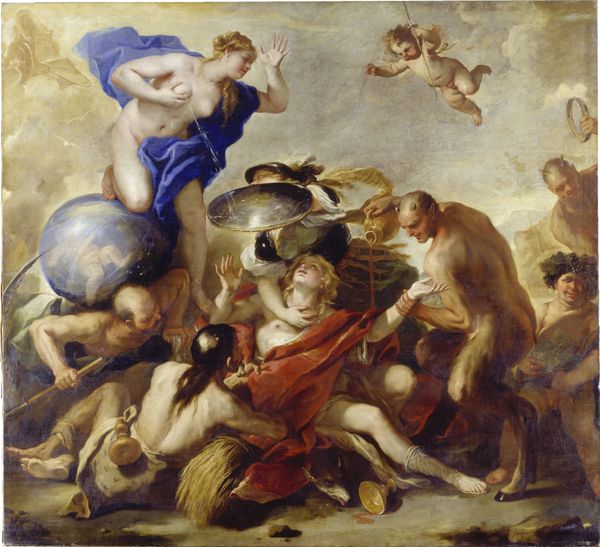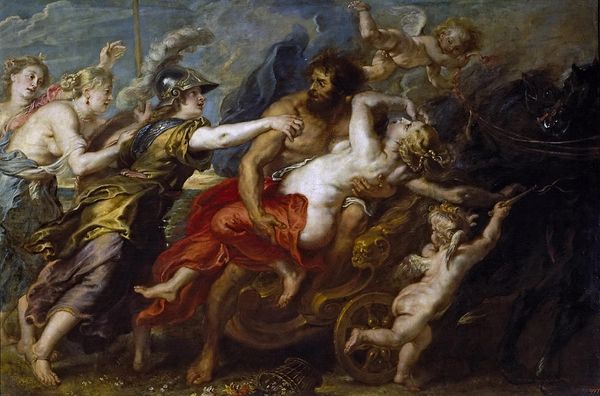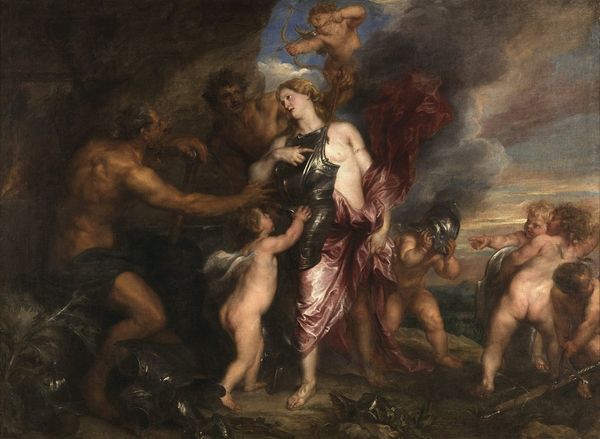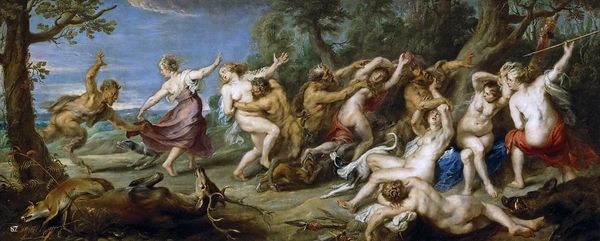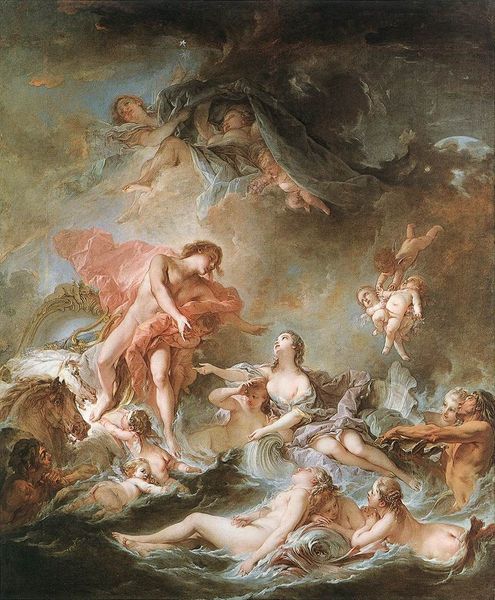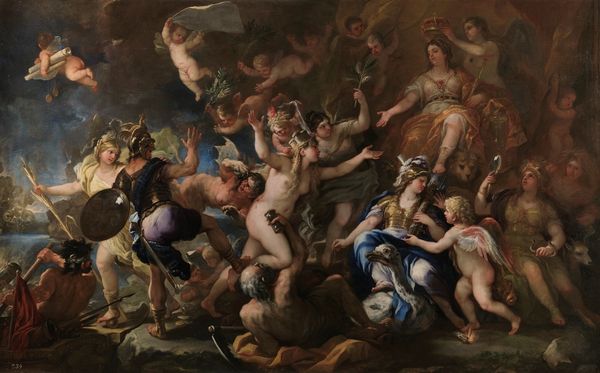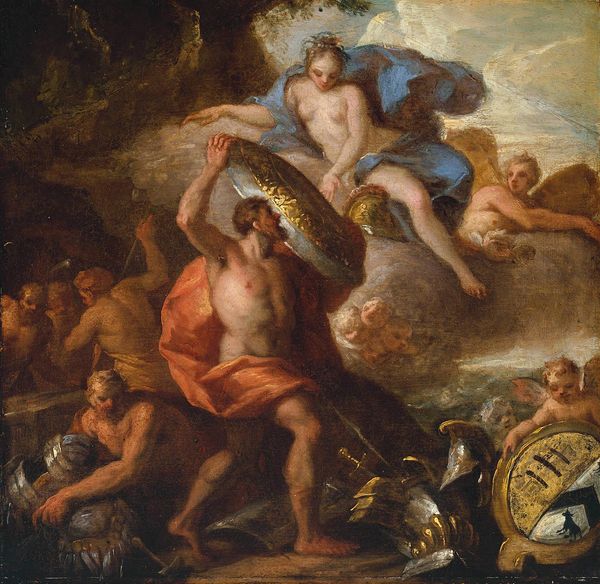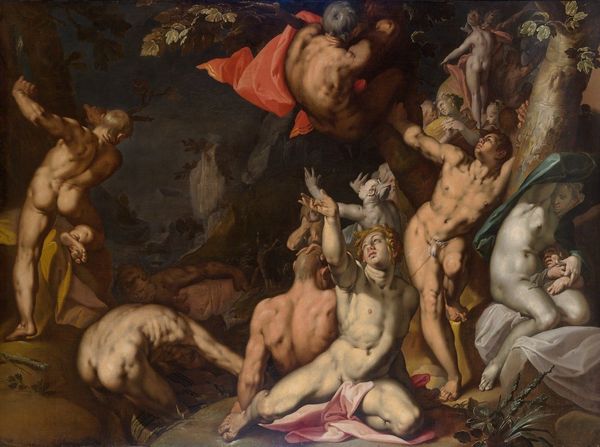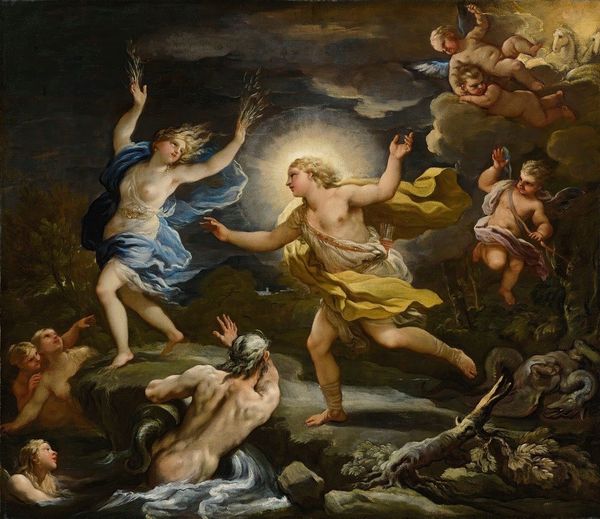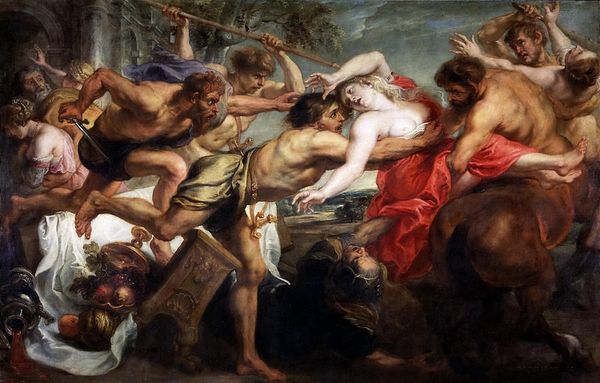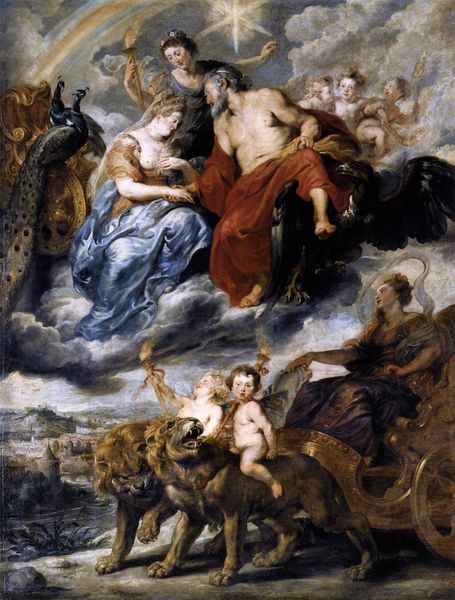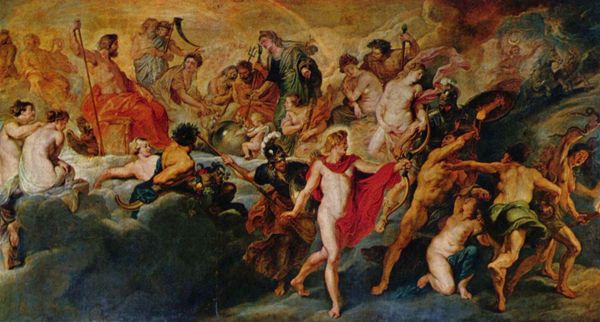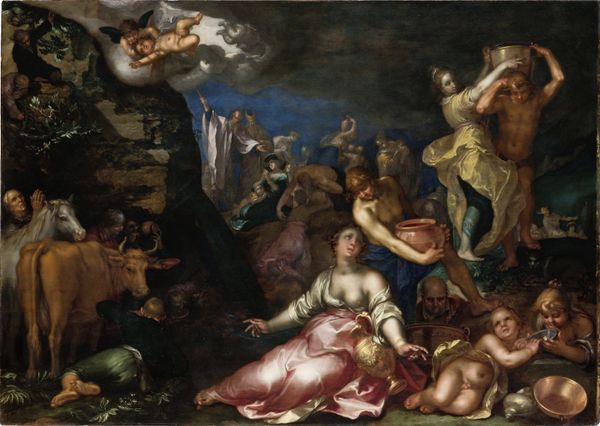
oil-paint
#
allegory
#
baroque
#
oil-paint
#
figuration
#
oil painting
#
flemish
#
mythology
#
history-painting
#
nude
Dimensions: 206 x 342 cm
Copyright: Public domain
Curator: Woah, this one hits you like a gut punch, doesn't it? Chaos in creamy colours! Editor: It does. This is Peter Paul Rubens's *The Consequences of War*, painted in 1638. It hangs today in the Palazzo Pitti, in Florence. Rubens, as a diplomat, understood the tragic realities behind grand pronouncements of state. Curator: That explains it. It's just... bodies everywhere. Gods and mortals tangled together. You almost smell the fear. I feel Venus there, centre stage, is she trying to stop Mars? Pulling at his cloak, looking… imploring. But he's not listening, is he? Editor: That's precisely the point. Venus, the goddess of love, along with her attendants, attempts to restrain Mars, the god of war, from unleashing further devastation. Rubens uses mythology to depict the horrors of the Thirty Years' War then ravaging Europe. Notice the plague figure right behind Venus, its arms also lifted up as though warning of looming catastrophe. Curator: Oh my gosh I hadn’t spotted the plague. Look how vibrant even the most depressing details are. Like that poor lute player sprawled on the ground, instrument broken… It’s opulent devastation, like a Renaissance Kardashian meltdown. He's turning misery into...artistic mastery, I guess? It's kind of bonkers. Editor: It is, intentionally so. The broken lute is meant to symbolize lost harmony, in the political sphere of Europe but also personally to individual observers. It's a complex commentary on the breakdown of peace and order. Think of what’s on the bottom of the frame too: open books, the family’s instruments for progress, culture, and society, utterly trampled and worthless against the power of Mars' sword and the flames lit by Alecto on the right side. It is a lament that war knows no class. Curator: It all feels so dramatic and so hopeless! Okay, that does make more sense in a messed up kinda way, you know. I guess sometimes the most beautiful things can come from the ugliest truths. Thanks for untangling all of that a bit! Editor: My pleasure. The painting really shows how art can reflect the brutal realities of history while reminding us to promote peace in the face of adversity and division. I am still finding more in its frame everyday I sit with the painting and think of its messages.
Comments
No comments
Be the first to comment and join the conversation on the ultimate creative platform.
